
Art of Science Gallery
After the success of our Science as Art Gallery we looked for for submissions of Art that have been inspired by STEMM (Science, Technology, Engineering, Mathematics and Medicine). We hope that this gallery encourages creativity, demonstrates the important links between the Arts and STEMM and is a celebration of all things STEAMM! Click on each image for a full screen view.
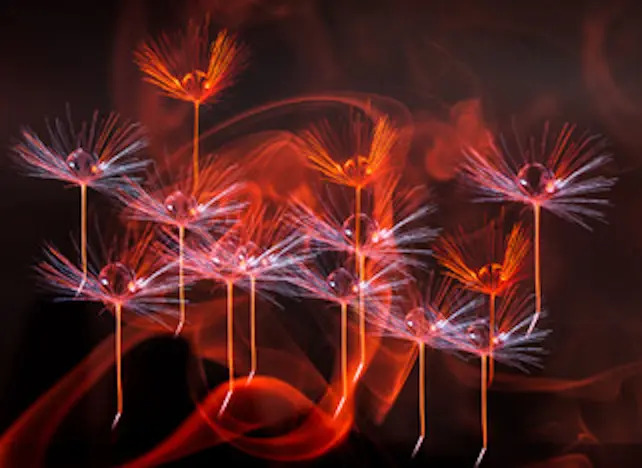
Giles Hammersley (Devon): ‘Dandelion Clock’, photo – “A single seed from a dandelion clock mounted upright with a droplet of water syringed into its centre. Photographed using two flashes (with red and blue gels covering them), which fired a number of flashes whilst the camera was moved slightly, giving several images of the seed on one frame. The frame was then combined with an image of smoke, taken with the same coloured gels.”
Dandelion seeds really are fascinating and in fact, it was only very recently that scientists found out what makes them float through the air- this Nature article explains their amazing flight mechanism.
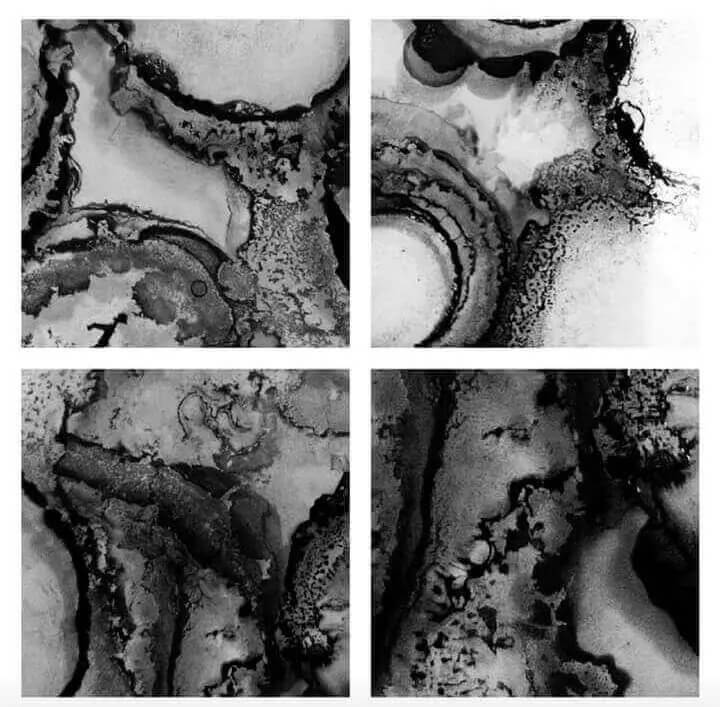
Becky Derbyshire: ‘Under the Lens’, Alcohol ink on slides – “In this piece I used a macro camera lens capturing an upclose image of the unique resemblance to tissue samples that is created by the chemical reaction that occurs when alcohol ink is subjected to combustion. The removal of colour is a contrast to the process of gram staining.”
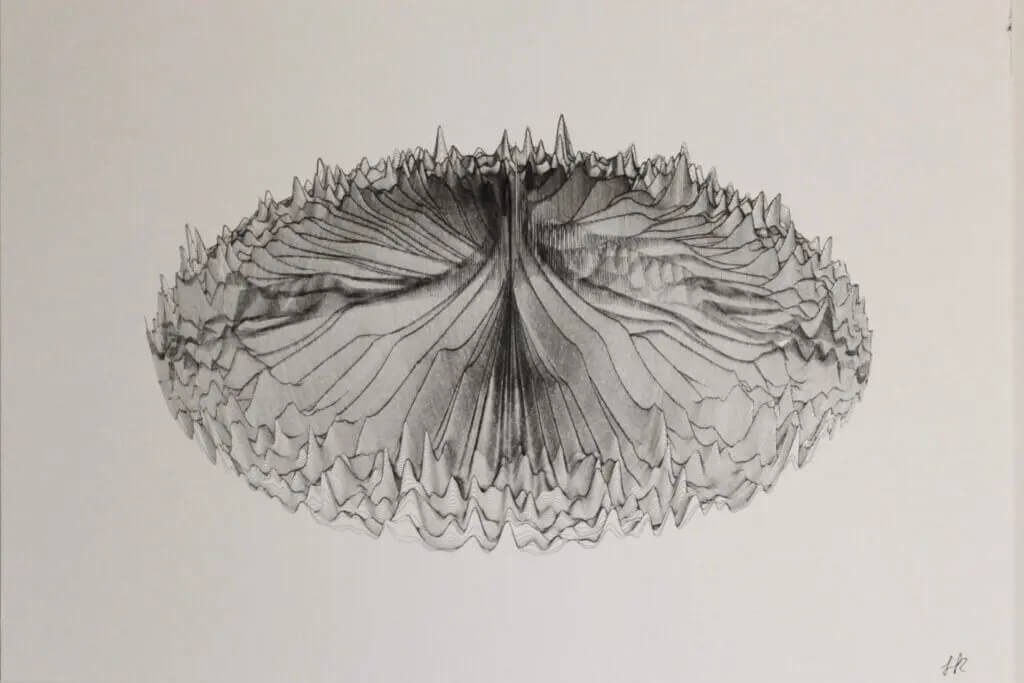
Simon Russell: ‘Anthropophony’ – “‘Anthropophony’ is a term “used to describe all sound produced by humans”. This plot is a visualisation of a sound recording. It is a field recording of a throat singing and Tibetan singing bowls. I sampled a high number of discreet frequency bands to create a really detailed visualisation of the sound. Each ring is a different frequency with the highest frequencies around the outside of the disc and the low frequencies at the centre.”
See more of Simon’s fascinating work on his Twitter and Instagram @simonfarussell.
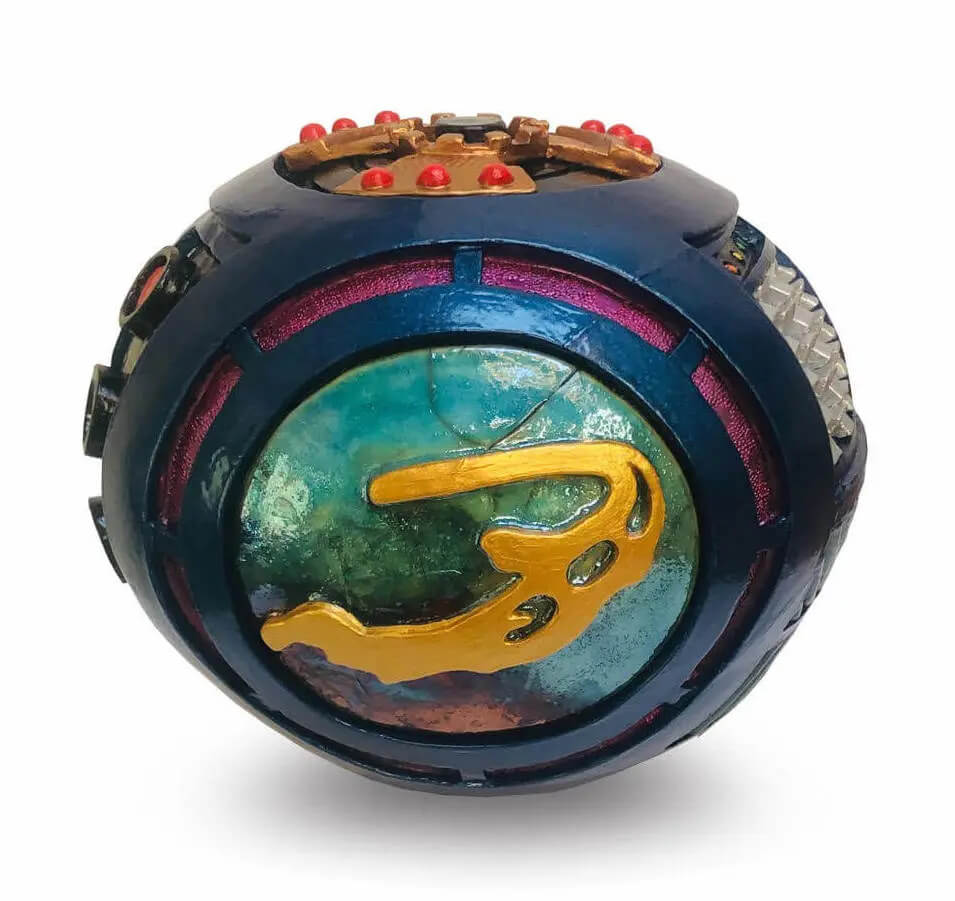
Eddie Kent: ‘Space Orb XI’ – ‘the course was set, the new world awaited’ – “This is a hand made and carved ceramic orb Inspired by space/discovery and my love of retro technology. It features buttons, cogs, sliders and vents plus at its centre a view of a distant galaxy.”
See more of Eddie’s fascinating work on his website, eddiekentceramics.com.
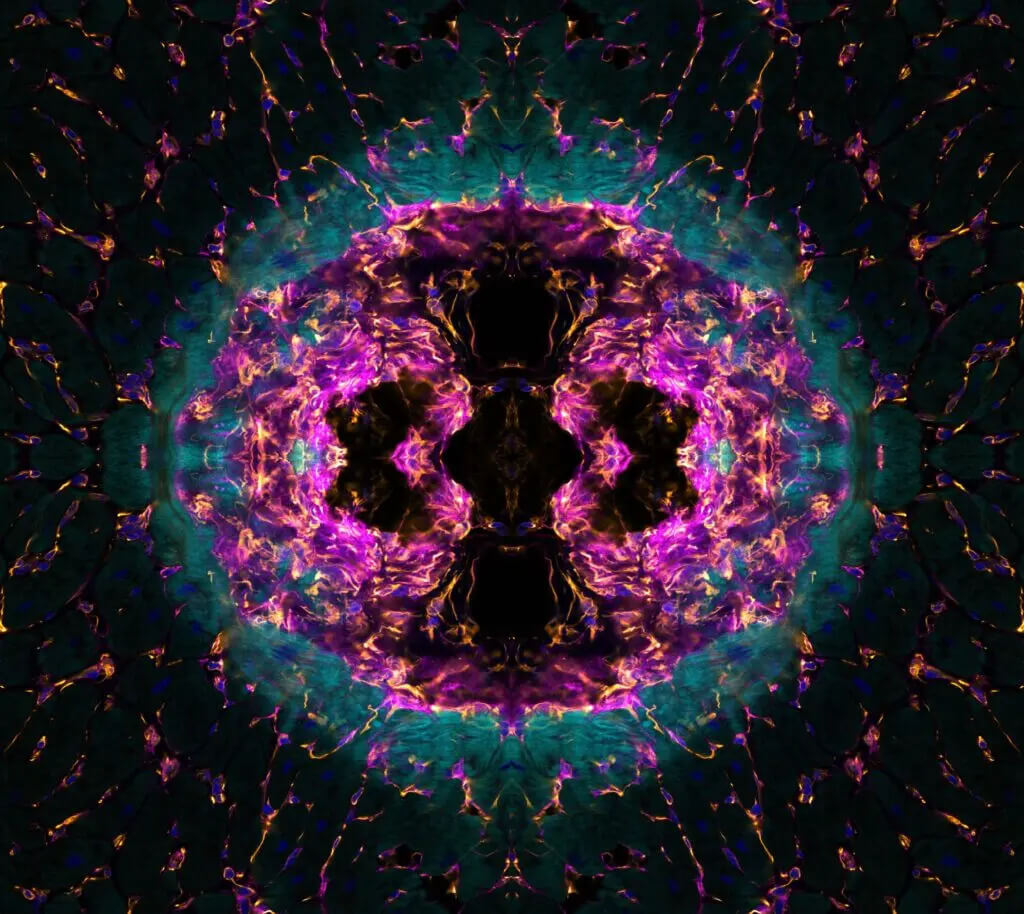
Anna Meletiou (Exeter): ‘Work of Heart’ – “This image was taken using confocal microscopy. It is showing four different structures located in a heart tissue of a pig that had heart attack. The same image is rotated and flipped to create this kind of fractal ‘work of heart’.”
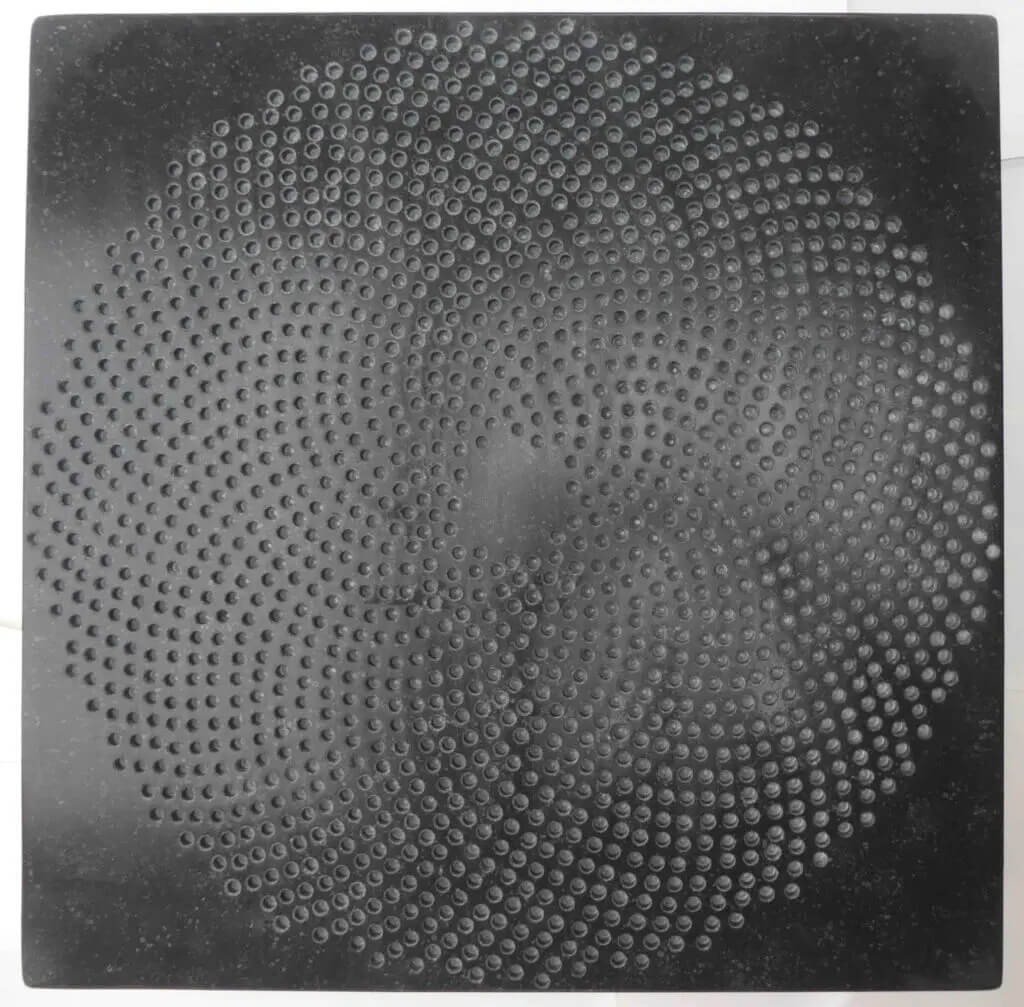
David Newman (Widecombe in the Moor): ‘Phyllotaxis 1’ (in Kilkenny Limestone 500mm x 500mm x 100mm) – “This design is based on Fibonacci spirals such as are found in a sunflower. I am very interested in patterns in nature and the balance between geometry and natural randomness. Also I like the fossils in stone which accentuate the feeling of connection with nature.”
To see more of David’s work visit the South West Sculptors webpage, or follow him on Instragram.
Fibonacci sequences are fascinating and appear very frequently in nature. Learn more about ‘The Magic of Fibonacci Numbers’. Maths can be very beautiful!
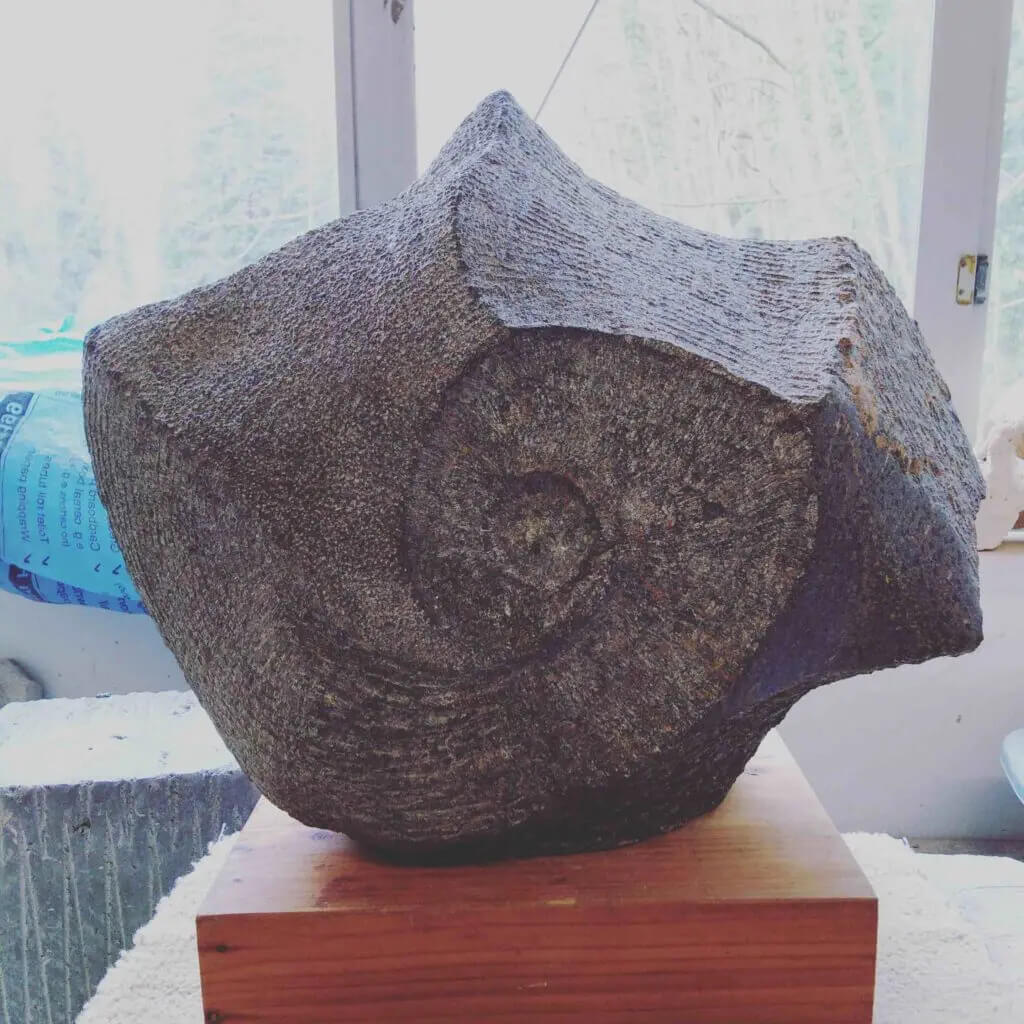
Anne-Marie Moss (Buckfastleigh, Devon): ‘Shore’ – “This Cornish Polyphant Soapstone was inspired by the Devon coastline specifically the patterns created by the tide in sand and rock.”
See more of Anne-Marie’s work on Instagram.
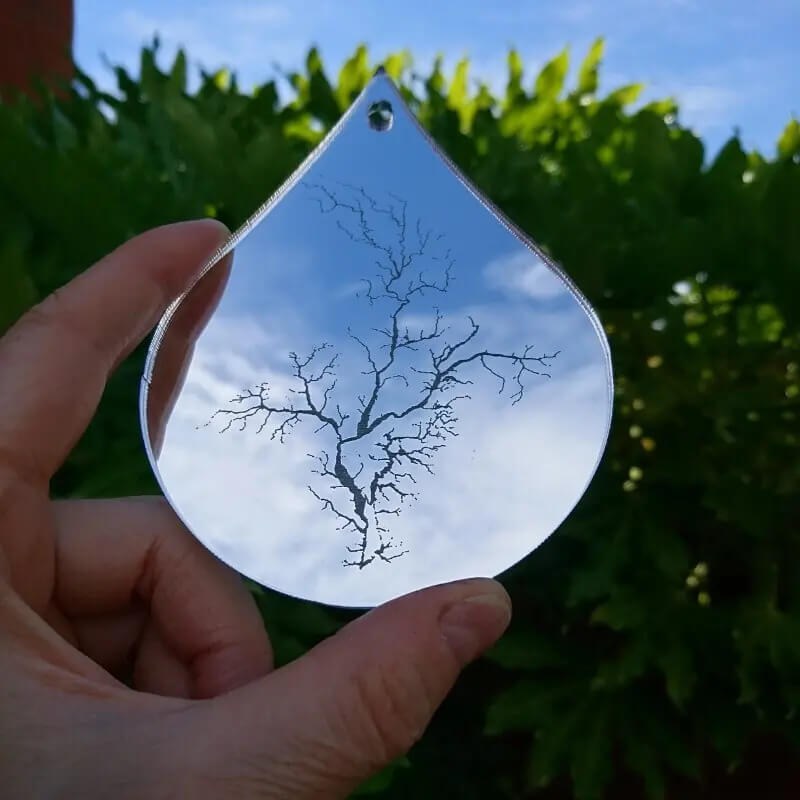
Clare Bryden (Exeter): “Green|Blue: Exe”, Laser engraving on mirror-backed acrylic – “This piece visualises Environment Agency flood-risk data, orienting river catchments as ‘trees’. The view from above is normalised. Maps give the impression of omniscience and omnipotence, but ‘flood risk’ questions both in the face of uncertainty and natural forces. What seems strong is actually vulnerable. Changing perspective confers understanding and humility.”
See more of Clare’s work on her webpage, or follow her on Instagram.
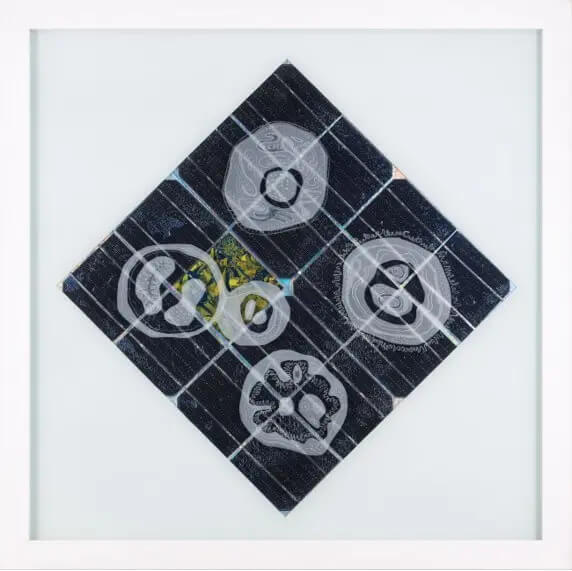
Naomi Wright: “Synthesis 4”, Solar Panel Artwork By Naomi Wright and The Art and Energy Collective – “Synthesis 4 by Naomi Wright is a solar panel artwork which explores the moment when a cell divides – the creation of new life and new possibilities. Learning and evolution takes places at a cellular level and that new knowledge is shared through golden moments of demonstration and communication.
The Art and Energy Collective is a group of artists, makers, technologists, academics and others who collaborate, share learning and forward the aesthetics of energy generation technology. We develop artistic responses to the climate emergency to help people engage creatively with the huge changes we experience with our energy system. Our projects help participants and audiences feel excited and connected with energy, help them learn new skills, spend time thinking about energy and sharing great ideas for their communities.”
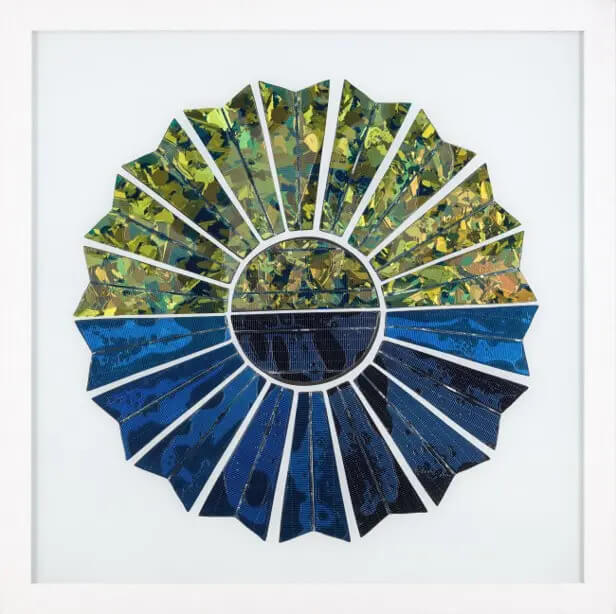
Chloe Uden: ‘Dawn Breaks’, Solar panel artwork by Chloe Uden and The Art and Energy Collective – “Dawn Breaks is the first Solar Panel Artwork made in the UK, using all the standard materials used in the creation of a ‘normal’ solar panel, Chloe has developed new techniques for working in this medium in order to craft a piece that suggests we can dismantle our expectations and find a new way of seeing existing technology and its role in our culture and landscapes.”
The Art and Energy Collective is a group of artists, makers, technologists, academics and others who collaborate, share learning and forward the aesthetics of energy generation technology. We develop artistic responses to the climate emergency to help people engage creatively with the huge changes we experience with our energy system. Our projects help participants and audiences feel excited and connected with energy, help them learn new skills, spend time thinking about energy and sharing great ideas for their communities.”
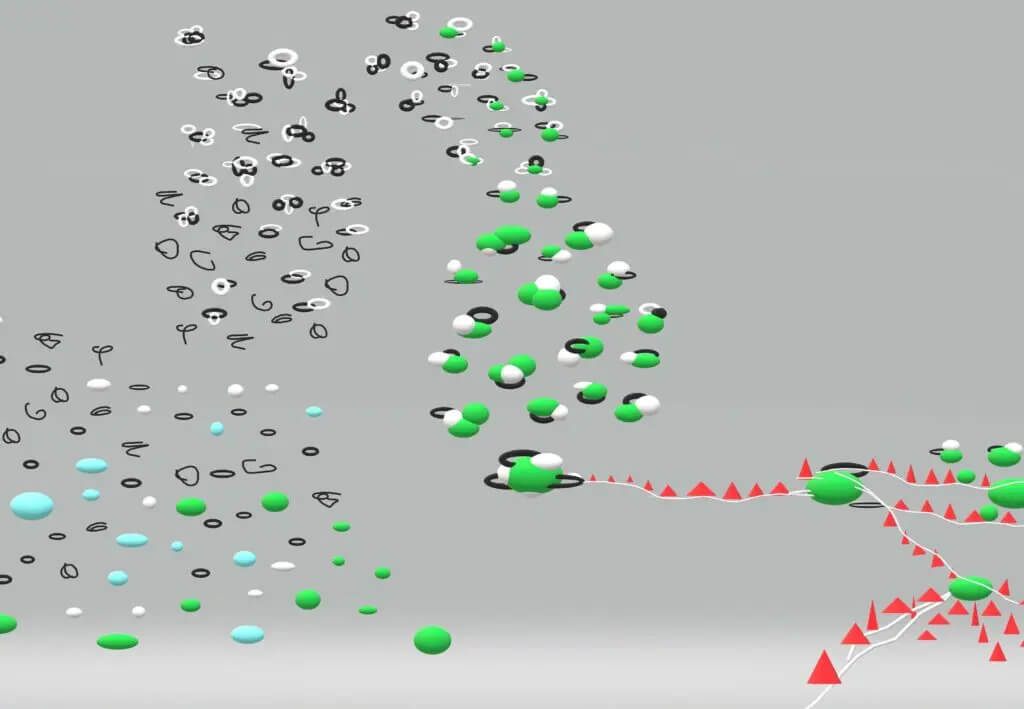
Susana Crowther: ‘Fundamental Particles’ – “The world seen through the imagination of a particle physicist is rich and complex. Cosmic rays, containing quarks, leptons and gauge bosons, are raining down and antineutrinos are emerging from the ground. All is attracted to the earth by gravitational interactions, mediated by gravitons.”
You can see more of Susana’s work here!
Although the graviton is a useful concept in particle physics, it is still a theoretical particle, we don’t yet have the ability to detect it (if it exists to be detected!). It’s also interesting to note that quarks are always bound together in particles categorised as hadrons (of which protons and neutrons are the most familiar). The gauge bosons that are long-lived and easily detectable, such as in cosmic rays, are the all-familiar photons (of light). Particle physics is indeed a rich and complex subject!
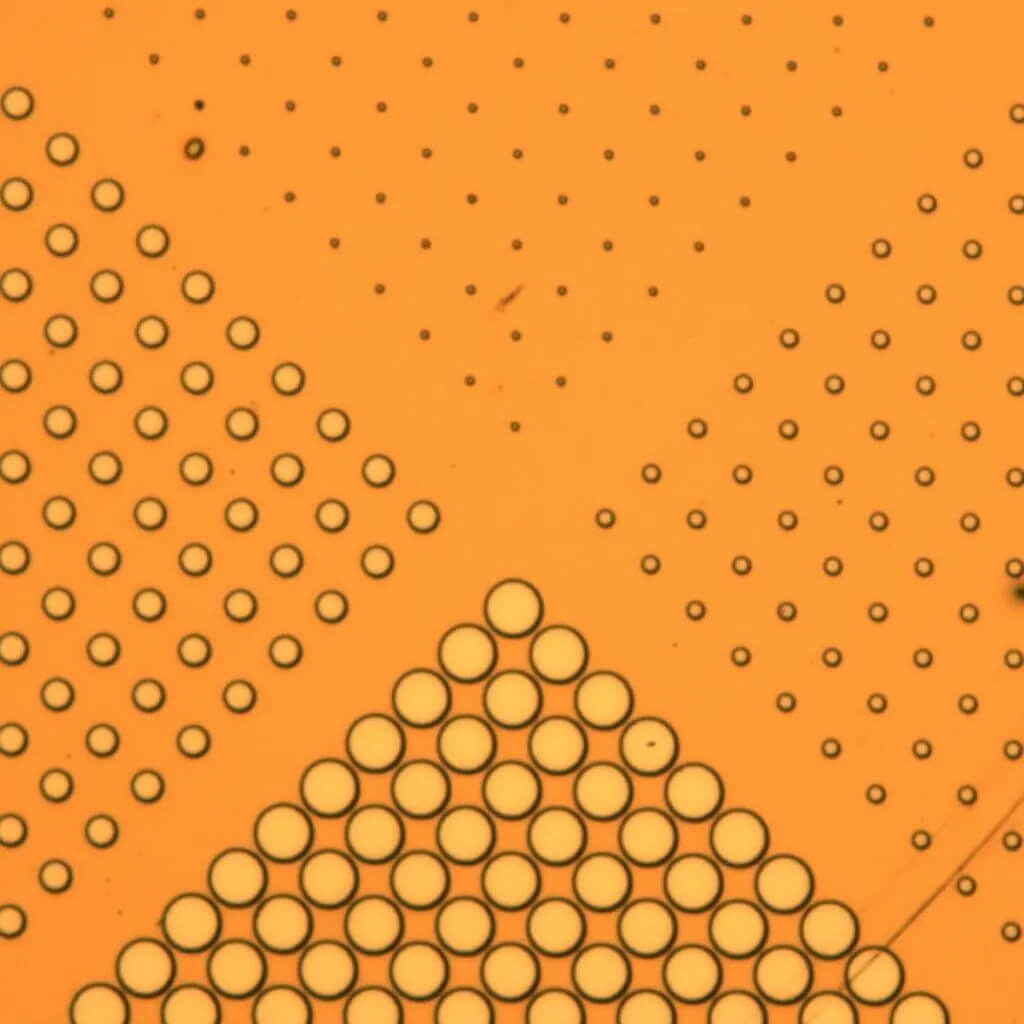
Dr David Osuna: ‘The Four Elements’ – “This no-filter photograph shows four arrays of cylindrical, 8 microns-deep holes patterned in a photoresist layer using laser-writing microtechnology, before being filled with magnetic compounds using electrodeposition. Diameters are (clockwise from the bottom): 20, 10, 2 and 4 microns, much thinner than a human hair! The four triangles look nice as a minimalistic art wall poster.”

Anne Krinsky: ‘The Ephemera Scrolls’, Installation Detail in St. Augustine’s Tower London, 2019. 4 of 10 Archival Digital Prints on Platinum Etching Paper, Each scroll: 200 x 60 cm. – “As part of my project about vulnerable wetlands and climate change, I photographed the River Naab in Bavaria in 2019 during the hottest June on record. River levels dropped revealing tree roots, and floating duckweed islands formed in the warming water. I worked with this documentation to create The Ephemera Scrolls, a series of ten digitally-printed scrolls for an installation in St. Augustine’s Tower London.”
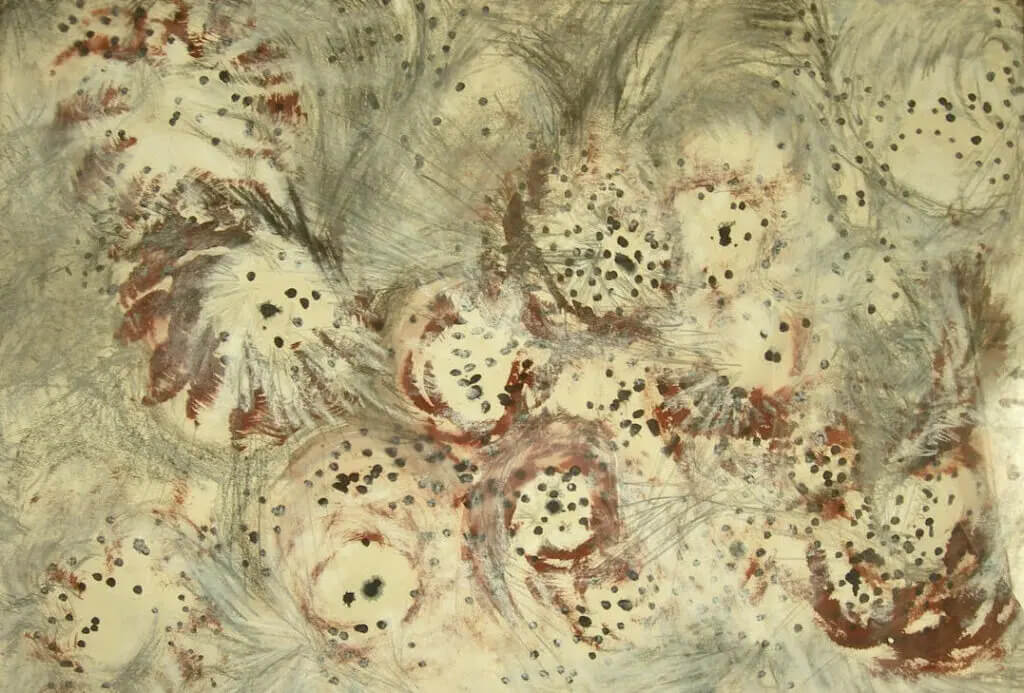
Melanie Guy (Tamar Valley, Cornwall): ‘Synchronicity’ – “Energies meeting – synchronicity in the Milky Way. Jung’s example of synchronicity is ‘of a parallel, non-causal relationship between the development of celestial phenomena and those marked by terrestrial time’. We may not yet understand these remote relationships but the energies may interact nonetheless.”
Carl Jung was a psychiatrist, who had some very interesting discussions with Nobel prize-winning physicist Wolfgang Pauli as this Nature book review explains.
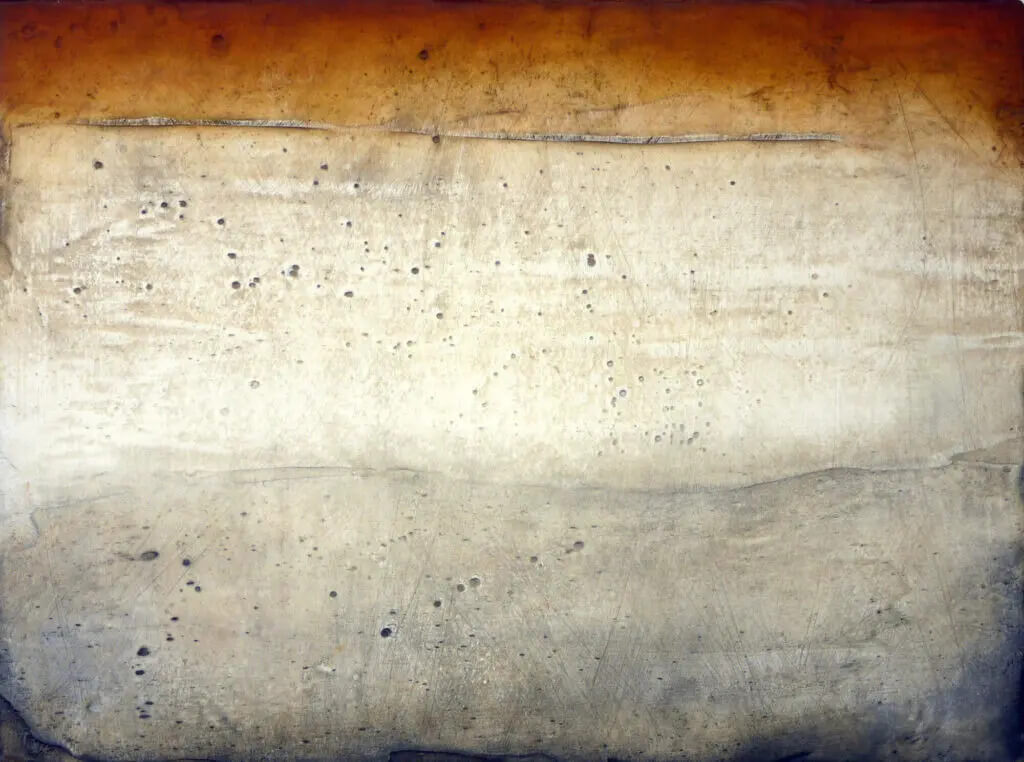
Amanda Wallwork RWA: ‘Deep Time 13’, Oil on plaster, 60 x 80 x 4 cm – “This work is from a series exploring geological deep time – how the rock beneath our feet, that we barely give much thought to, stores the data of landscapes millions of years ago – and the beauty of being able to decode that.”
You can see more on Amanda’s website and Instagram.
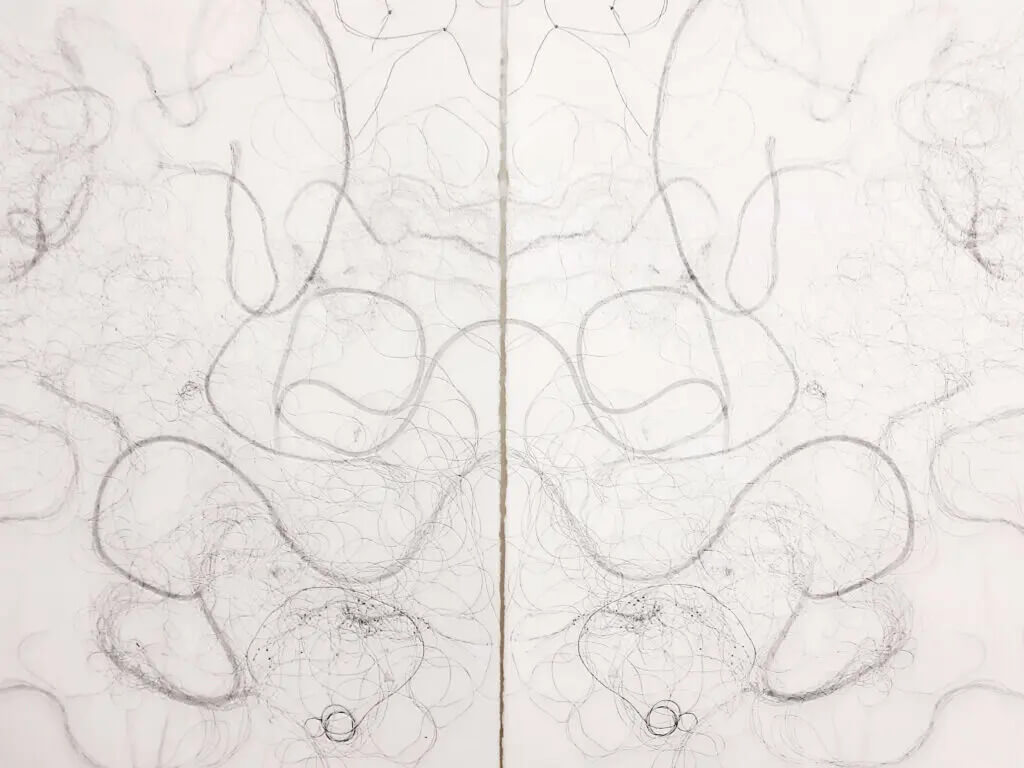
Lydia Halcrow (Bath, Somerset): ‘Ghost Plastics’, Carbon transfer on Somerset Satin, 45 x 75cm x 2 – “These are made with fishing twine from the strandline of the Taw Estuary in Devon. Research into the growing plastic debris in our rivers and seas, how it behaves as it breaks down, its impact on the more-than-human world inspires the work; hope lies in the small act of bending down to explore the debris through touch.”
You can see more on Lydia’s website and Instagram.
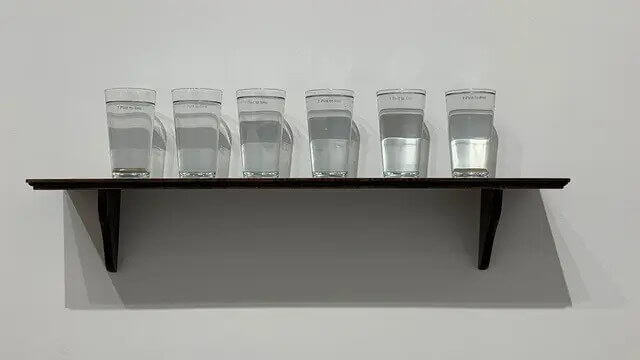
Melissa Mahon (Bath, Somerset): ‘One pint to Line’, 2016(2020) – “One pint to Line interrogates the arbitrary nature of measurement and that we believe what we see. The photograph shows a wooden shelf with six identical generic glasses. Each has ‘One pint to Line’ etched close to the top, in different positions. The markings are all believable, with just one correct.”
You can see more of Melissa’s thought-provoking work on her website and Instagram.

Dr Sébastien R. Mouchet (Exeter): ‘Fractals in Colours’ – “Fractals are mathematical objects that appear similar at different scale levels. One way to create fractals at home is to press paint between two surfaces and pull them apart. Here gouache was pressed between two microscope glass slides.”
To find out about Sébastien’s research visit his webpage, or find him on Twitter. Want to know more about fascinating fractals? Here’s a nice video.
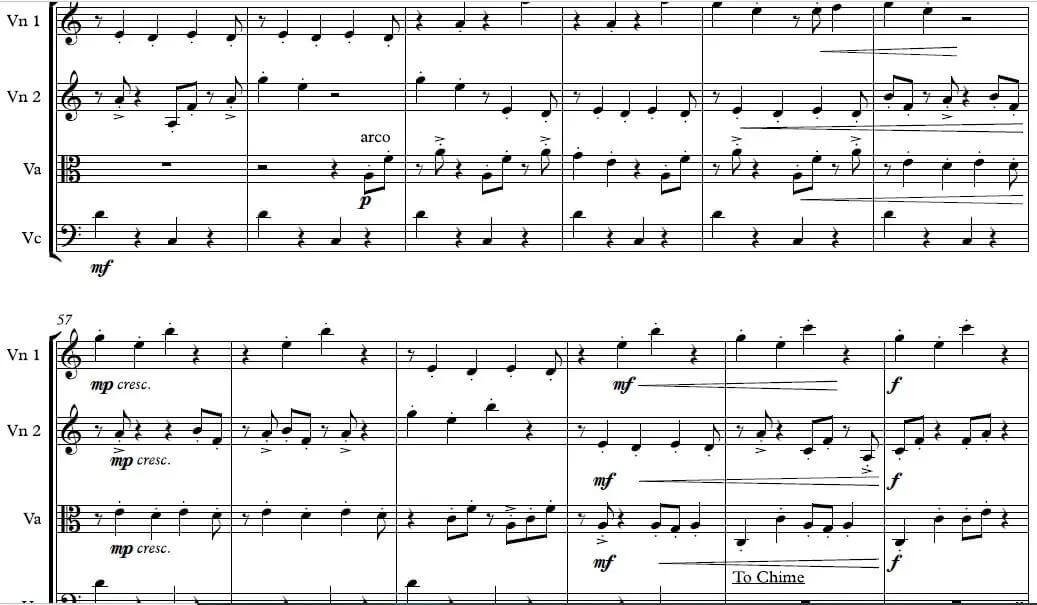
Anna R Matthews: ‘timepiece’ – “timepiece is a string quartet, inspired by the concept of time and the technology of the pocket watch”.
Our first musical entry! Perhaps we need to launch a Sound of Science Gallery next, we love this! – Listen to the piece using the player above, or visit the soundcloud page. You can see more of Anna’s work on her website.
Image credits
We’re very grateful to the artists who gave permission for their incredible images to be used on the Art of Science banner and webpage:
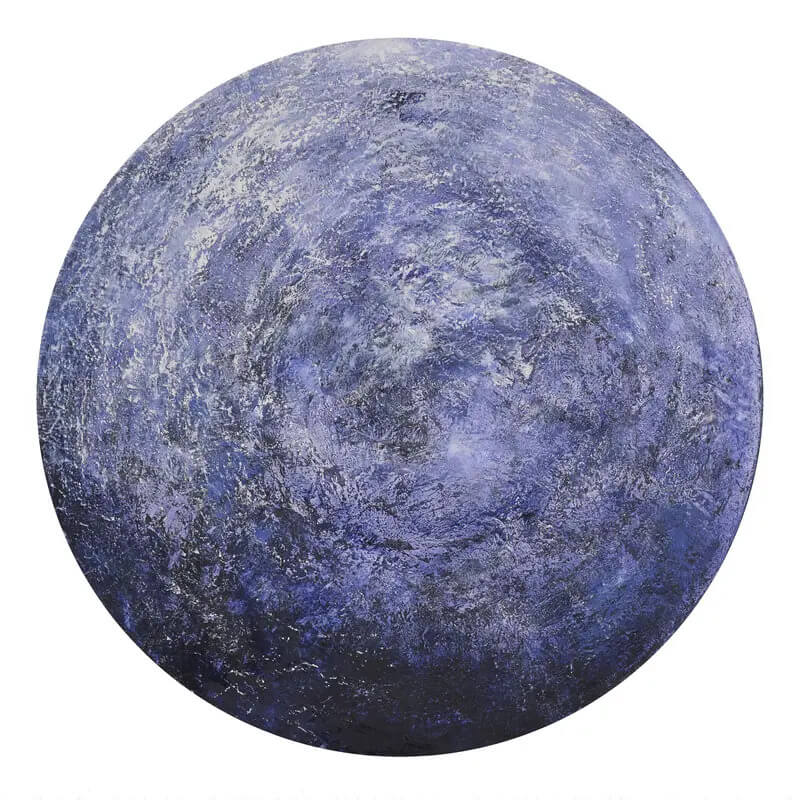
Pandora Mond – Rains of Glass
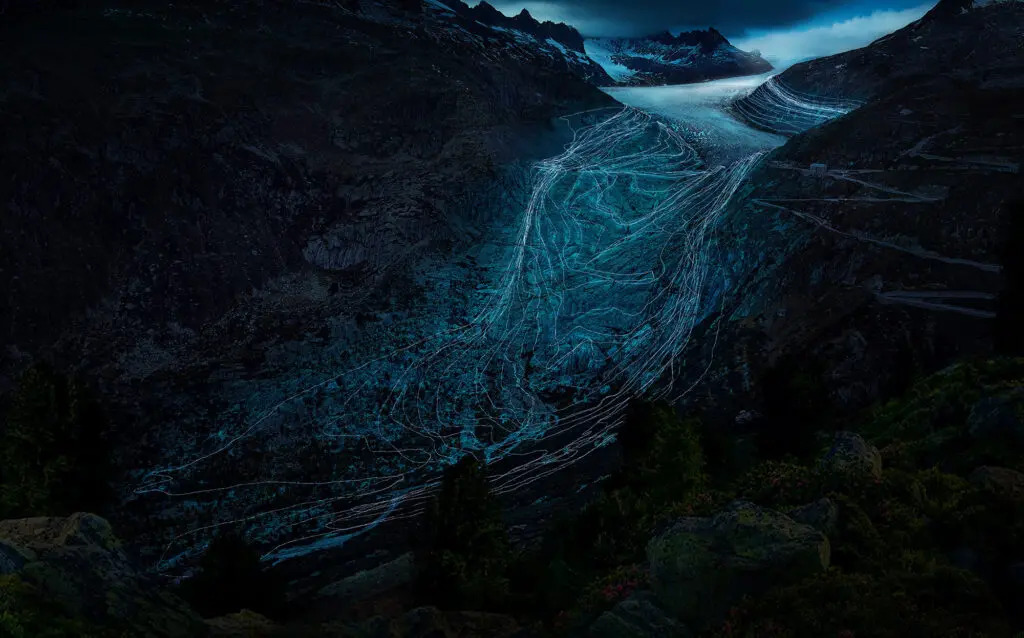
Fabian Oefner – The Rhone Glacier
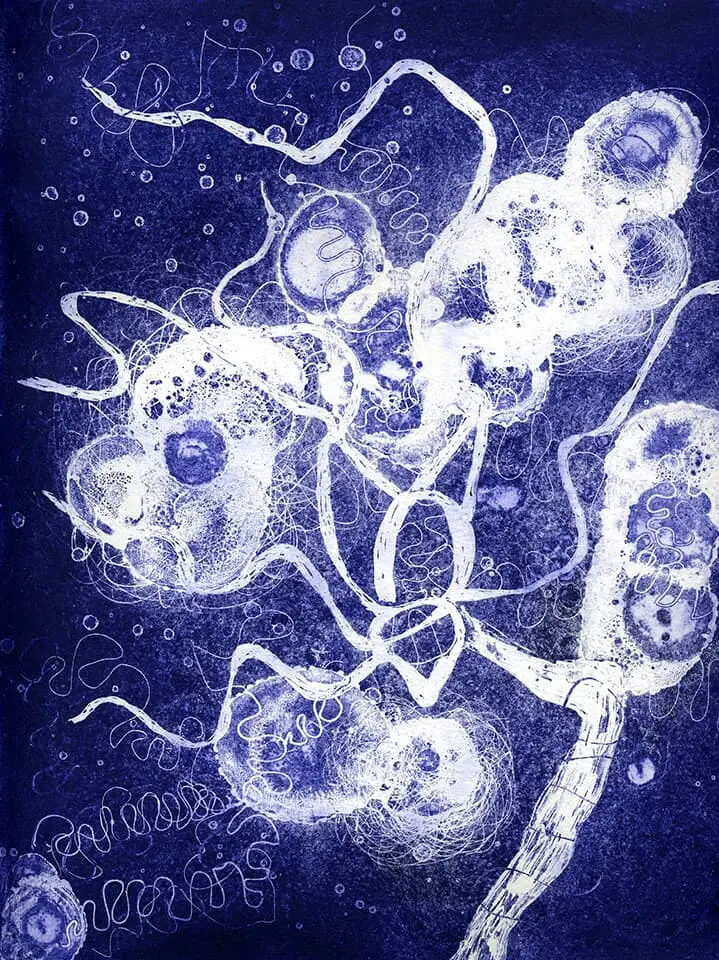
Susan Aldworth – Brainscape 21, etching and aquatint, 2005
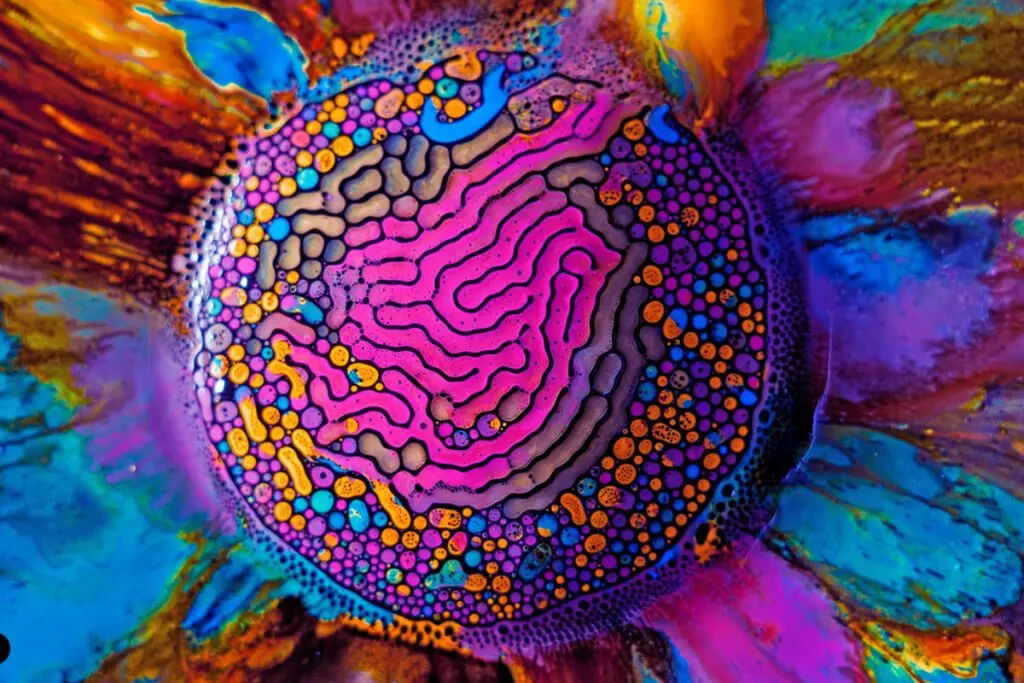
Fabian Oefner – The Invisible Dimension